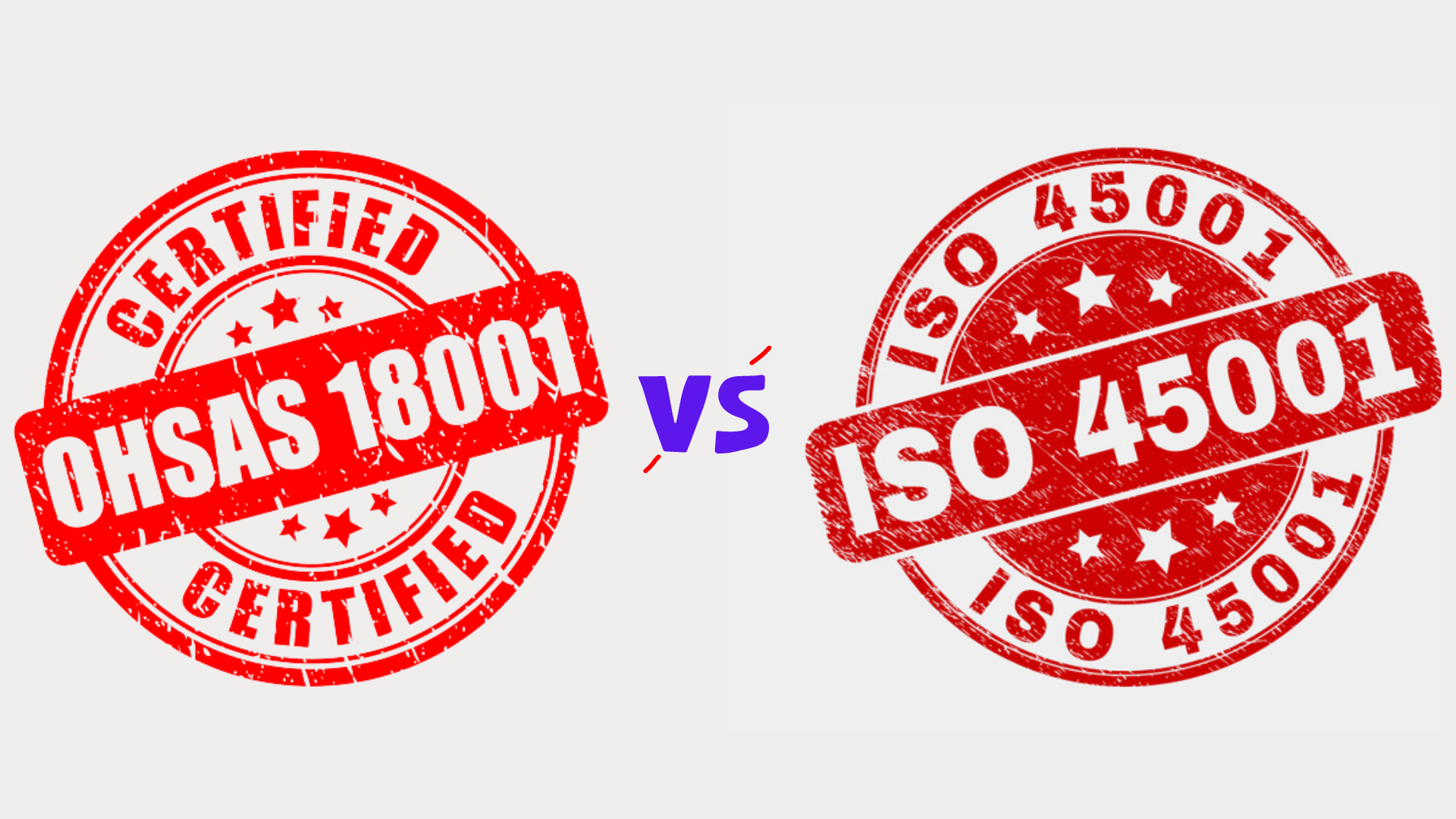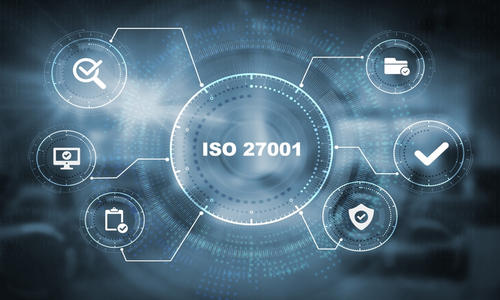Over the years, there have been significant incidences of workplace accidents due to various factors. This has required organizations, irrespective of its size and industry, to implement proper safety measures. The International Organization for Standardization (ISO) published the standard ISO 45001 to address such issues. The ISO 45001 Standard entitles organizations to execute standard practices of workplace safety for employees. This standard replaces the OHSAS 18001, which specified the requirements for the occupational health and safety management system.

Jump ahead to
What is OHSAS 18001 Certification?
OHSAS 18001 specializes in devising measures to control the hazards that may occur in the workplace. This standard emphasized how businesses can manage risks and enhance their efficiency levels. Additionally, the standard followed a reactive approach wherein the safety management team had to handle the responsibilities of hazard control. However, businesses are now forced to apply ISO 45001 standard to manage their workplace safety.
What is ISO 45001 Certification?
ISO 45001 is an international standard, launched by ISO quite recently. The standard utilizes a proactive approach to implementing workplace safety within the entire organization. This ISO standard certification forces businesses to align their safety measures in accordance with organizational compliance. Furthermore, ISO 45001 standard allows organizations to mitigate any possible injury or disease which can occur at the workplace.
OHSAS 18001 vs ISO 45001: 6 Major Differences
Let us look at the major differences between OHSAS 18001 and ISO 45001.
Interrelation between processes
The OHSAS 18001 provides a specific set of procedures which organization should follow while executing occupational health and safety system. This standard primarily focuses on drawing solutions for the known hazards that may impact the safety of workers in the organization.
On the other hand, ISO 45001 is a process-based system. On applying this standard, organizations focus on why the hazard occurs in the organization. Attaining answers for why a hazard occurs enables businesses to remove processes that have a significant impact on an employee’s health.
Method of implementing
OHSAS 18001 standard does not involve the top management authorities and their approval. A team of safety management professionals designs and applies the standard to specific departments.
Businesses that look forward to ISO 45001 get to apply the standard within the whole organization. The ISO standard also specifies the role of management authorities in creating an enhanced working environment. The standard is designed to consider the viewpoints of every employee of the organization.
Risk Management
While facing risks within the workspace of an organization, OHSAS 18001 enables the team to treat the risk and control its impact. The occupational risks are simply managed using predetermined methods.
The ISO 45001 Standard is designed to assess the risks that may occur and take steps to prevent it. Additionally, the standard empowers businesses to convert such risks into opportunities. This helps in gaining a competitive advantage over others in the industry.
Involvement of the organization
Businesses that apply OHSAS 18001 have a designated team for handling workplace hazards. Employees/workers are not allowed to participate while instilling a safety management system.
Applying ISO 45001 standard requires the entire organization to participate and give their opinions on the OH&S system. The assessment results are openly shared with the entire organization to gain input on designing a safety system for workers. In addition, employees are further trained to identify threats that may harm the workplace environment and take necessary action to report the same.
Structure of the standard
The OHSAS 18001 standard uses a basic structure that will not combine with other ISO standards for efficient business management. The standard, designed in 2007, is not suitable for applying the universal structure of Annex SL.
ISO 45001 standard uses the Annex SL Structure, which simplifies the process of integrating with other management systems. The Annex SL is designed for businesses to aggregate their management system with other standards.
Enhanced planning process
OHSAS 18001 is not fit for aligning business goals to the health and safety objectives of the workspace. The team merely analyses the hazards and reacts to protect the organization from unsafe incidents.
ISO 45001 standard is designed to link business objectives with the OH&S system. Prior to instilling the system, the standard enables organizations to know the resource availability, staff availability, and key process indicators. This helps in setting the goals and priorities of the occupational health and safety system.
To conclude
The ISO 45001 standard was published in 2018 to incorporate the latest advancements in the workplace environment. This has necessitated businesses to meet the requirements as specified in the new standard. ISO 45001 has assisted various organizations in improving their occupational health and safety systems within their structure.
Professionals willing to master the techniques and procedures of implementing the standard can take up the ISO 45001 Foundation Certification. Prior to earning the credential, candidates can attend the ISO 45001 Foundation Training and attend the exam. The course further assists in getting hands-on experience and real-time insights on ISO 45001 standard.
Summary
OHSAS 18001,the older occupational health & safety standard has been replaced by ISO 45001 a newer, globally accepted standard for workplace safety management OHSAS 18001 was procedure-based and reactive, focusing on known hazards. In contrast, ISO 45001 uses a process-based, risk-based approach, encouraging proactive hazard identification, prevention, and continuous improvement. Also, ISO 45001 requires active involvement from top management and employee participation, promotes integration with other management systems using the common “Annex SL” structure, and encourages organizations to align safety goals with business objectives.
FAQs on OHSAS 18001 vs ISO 45001
1. What is OHSAS 18001?
It is a legacy standard for occupational health and safety management systems, now largely replaced by ISO 45001.
2. What is ISO 45001?
ISO 45001 is a modern international OH&S standard that replaced OHSAS 18001.
3. What is the major difference between OHSAS 18001 and ISO 45001?
OHSAS 18001 was hazard-focused and reactive, while ISO 45001 is risk-focused, process-based, and uses a proactive approach to prevent injuries.
4. What are the benefits of migrating to ISO 45001?
Improved risk management, cost savings, better safety culture, and stronger leadership involvement.
5. What is the significance of Annex SL in ISO 45001?
Annex SL provides a high-level structure that allows ISO 45001 to be easily integrated and aligned with other ISO management standards, like ISO 9001 and ISO 14001.
6. Why did ISO 45001 replace OHSAS 18001?
ISO 45001 was created to adopt an international, standardized format (Annex SL) and shift OH&S toward proactive organizational integration and leadership.
7. What are the key areas ISO 45001 focuses on?
ISO 45001 focuses on the context of the organization, needs of interested parties, worker participation, and risk/opportunity assessment.
8. Does ISO 45001 require top management involvement?
Yes ISO 45001 mandates active leadership commitment, unlike OHSAS 18001.
9. Is OHSAS 18001 still valid?
No, it has been superseded by ISO 45001, and organizations are encouraged to migrate.
10. How does ISO 45001 improve planning compared to OHSAS 18001?
It aligns OH&S objectives with business goals by assessing context, resources, and stakeholders before implementation.



